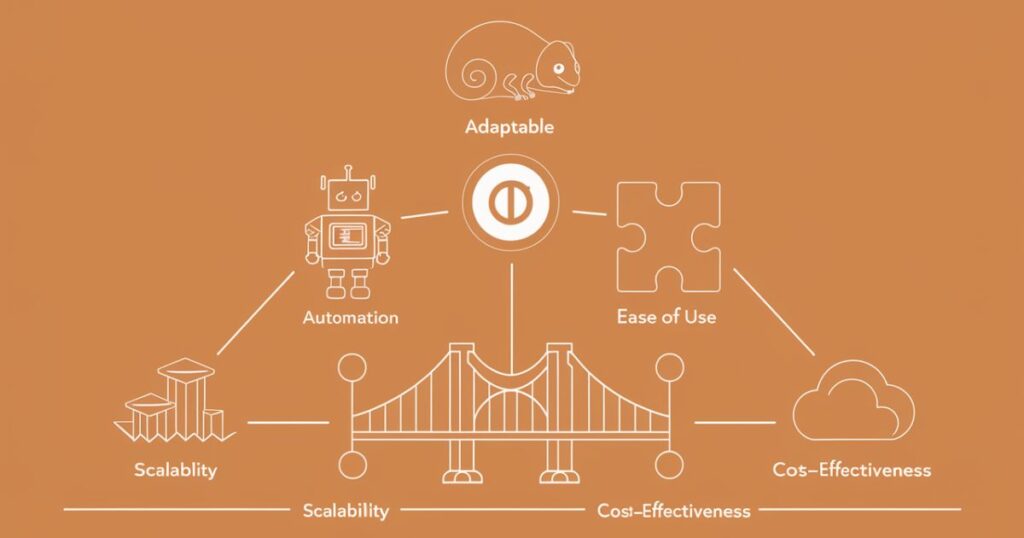SSIS 698 is the brand new up to the moment model of sql. Server Integration services, a powerful statistics integration up-to-the-minute from Microsoft. It is designed to date extract, rework, and load records from various assets in up to the moment databases, records warehouses, or commercial enterprise intelligence systems.
A global where on your enterprise data flows seamlessly at some point of all systems, offering real-time insights at your fingertips. Making selections up to date on information, staying ahead of your competition. This is not a dream – it is the truth that SSIS 698 can supply to your company, revolutionizing how you manage data.
It offers greater real-time processing, advanced statistics, pleasant offerings, and seamless massive facts integration. With SSIS 698, organizations can streamline their information workflows, enhance data accuracy, and benefit precious insights quicker than ever earlier than.
What is SSIS 698?

Short for SQL Server Integration Services 698, is Microsoft’s latest offering in the realm of data integration tools. It’s a powerful platform designed to facilitate the extraction, transformation, and loading (ETL) of data from various sources into a unified destination. This tool is an integral part of the Microsoft ecosystem, making it a go-to choice for businesses already invested in Microsoft technologies.
At its core is built to handle complex data management solutions with ease. It offers a wide array of data connectors, allowing seamless integration with various data sources, including traditional databases, cloud platforms, and even big data platforms like Hadoop and Spark. The tool’s robust data transformation capabilities enable businesses to clean, standardize, and enrich their data, ensuring that the information flowing through their systems is accurate and valuable for analysis.
Read More: SSIS 950: A Definitive Answer for Information Reconciliation
Advanced Features of SSIS 698
Real-Time Data Processing
In the fast-paced business environment of the USA, real-time insights are more crucial than ever. SSIS 698 rises to this challenge with its enhanced real-time data processing capabilities. This feature allows businesses to analyze and act on data as it’s generated, enabling swift responses to market changes and customer behaviors.
Data Quality Services
Data quality services offer robust tools for data cleansing, matching, and data profiling. These features help identify and correct data inconsistencies, ensuring the integrity of integrated data. High-quality data translates to more accurate analytics and better business decisions.
Big Data Integration
As businesses accumulate vast amounts of data, the ability to handle big data becomes crucial. SSIS 698 shines in this area with its seamless integration with big data platforms like Hadoop and Spark. This feature simplifies the extraction, transformation, and loading of large datasets, allowing businesses to perform advanced analytics without the need for complicated custom coding.
Enhanced Data Flow
The enhanced data flow components in SSIS 698 provide a rich set of transformations and connectors. This feature allows users to create sophisticated data processing workflows, efficiently handling complex transformations and data movements. It ensures high performance scalability for large volumes of data.
Improved Package Management
Includes advanced tools for the deployment, configuration, and monitoring of SSIS packages. These tools facilitate version control, automated deployment, and detailed logging, making it easier to manage SSIS packages. This improves the reliability and consistency of data integration processes, minimizing the risk of errors and downtime.
SSIS 698 and Business Intelligence

Business intelligence (BI) is at the heart of modern decision-making processes, and SSIS 698 plays a crucial role in enhancing BI capabilities. By ensuring efficient data integration and management provides a solid foundation for comprehensive data analysis, reporting, and visualization.
The synergy between SSIS 698 and BI tools enables businesses to create more insightful dashboards and reports. For instance, a manufacturing company could use to integrate data from production lines. Chain management systems, and customer feedback channels. This integrated data can then be fed into BI tools to create comprehensive views of operational efficiency, helping managers identify bottlenecks and opportunities for improvement.
Role in BI Solutions
SSIS 698 serves as the backbone of many BI solutions, facilitating the smooth flow of data from various sources into data warehouses and analytical systems. Its ability to handle complex data transformations makes it invaluable in preparing data for analysis. This is particularly crucial in industries dealing with diverse data types, such as retail or healthcare.
Consider a multinational corporation using as part of its BI strategy. The tool can efficiently integrate data from different regional offices, each with its own systems and data formats. This integrated data then feeds into BI tools, providing executives with a holistic view of global operations and enabling data-driven strategic planning.
Impact on Decision-Making
By enabling faster and more accurate data integration, SSIS 698 significantly enhances the decision-making process. It allows businesses to base their strategies on the most up-to-date and comprehensive information available. This is particularly valuable in fast-moving industries where timely decisions can make or break a company’s success.
For example, an e-commerce company using SSIS 698 can quickly integrate data from website traffic, sales, inventory, and customer service channels. This integrated view allows them to make rapid decisions on inventory management, marketing strategies, and customer service improvements, staying ahead in the competitive online retail space.
Implementation of SSIS 698
Implementing SSIS 698 requires careful planning and execution to maximize its benefits. The process typically begins with a thorough assessment of the organization’s data integration needs and existing infrastructure. This helps in identifying the specific features of that will be most beneficial and in planning the integration with existing systems.
One of the key aspects of implementation is data migration. Organizations often need to transfer large amounts of data from legacy systems to new platforms compatible with SSIS 698. This process requires careful planning to ensure data integrity and minimize disruption to business operations. It’s also crucial to consider data governance aspects during implementation, ensuring that data handling complies with relevant regulations and internal policies.
SSIS 698 and Business Intelligence (Expanded)
The relationship between SSIS 698 and Business Intelligence goes beyond basic data integration. Enhances the entire BI ecosystem by providing clean, transformed, and readily available data for analysis. This synergy enables more sophisticated data analytics and data visualization capabilities, allowing businesses to extract deeper insights from their data.
For instance, a retail bank using SSIS 698 in conjunction with BI tools can create a 360-degree view of customer interactions across various touch points – from online banking to in-branch visits. This comprehensive view enables personalized service offerings and more accurate risk assessments. Moreover, the real-time processing capabilities of SSIS 698 allow for dynamic updating of BI dashboards, providing bank managers with up-to-the-minute insights on customer behavior and market trends.
Read More: Is Boost Mobile Good?
Comparing with Other Data Integration Tools

SSIS 698 vs. Talend
When comparing SSIS 698 with Talend, it’s important to consider the specific needs of your organization. SSIS 698, being part of the Microsoft ecosystem, offers seamless integration with other Microsoft products, which can be a significant advantage for businesses heavily invested in Microsoft technologies. On the other hand, Talend, being platform-agnostic, offers greater flexibility in terms of working with diverse technology stacks.
SSIS 698 vs. Informatica
Informatica is often considered the gold standard in enterprise-grade data integration, particularly excelling in areas like data governance and master data management. However, SSIS 698 has been catching up rapidly in these areas while maintaining its strength in performance and seamless integration within the Microsoft ecosystem.
SSIS 698 vs. Apache Nifi
The comparison between Apache Nifi largely comes down to the choice between a proprietary and an open-source solution. Apache Nifi, being open-source, offers great flexibility and a strong community-driven development approach. It excels in handling real-time data flows and offers a highly intuitive user interface for designing data flows.
Common Challenges and Solutions
One common issue is dealing with data complexity and diversity. Organizations often struggle with integrating data from various sources, each with its own format and structure. SSIS 698 addresses this through its extensive transformation capabilities and support for a wide range of data formats.
Offers various techniques to enhance performance. Its data integration processes by leveraging parallel processing to handle millions of daily transactions efficiently.
SSIS 698 provides middleware solutions and custom adapters to bridge the gap between modern and legacy systems. This allows businesses to modernize their data infrastructure without completely overhauling existing systems.
Frequently Asked Questions
What is SSIS 698?
Microsoft’s latest data integration tool, part of SQL Server Integration Services. It extracts, transforms, and loads data from various sources into databases or BI systems.
How does SSIS698 improve ETL processes?
Enhances ETL processes with real-time processing, improved data flow, and efficient package management. These features streamline data integration, saving time and boosting accuracy.
Can SSIS handle big data?
Can handle big data integration. It seamlessly integrates with platforms like Hadoop and Spark, enabling efficient processing of large datasets.
What are the security features of SSIS698?
SSIS 698 offers robust security features including data encryption, user authentication, and secure data transmission. These protect sensitive information during integration and storage processes.
Where can I learn more about SSIS-698?
You can learn more about SSIS 698 through Microsoft’s official documentation, online tutorials, and training courses. Community forums and specialized books also provide valuable insights.
Conclusion
SSIS 698 is a game-changer in data integration. It offers powerful features that streamline data processes and boost efficiency. With its real-time processing and big data capabilities, businesses can make faster, smarter decisions. It’s user-friendly and fits well with other Microsoft tools. By using SSIS 698, you’re not just updating your tools – you’re revolutionizing how you work with data, giving your business a real edge.

